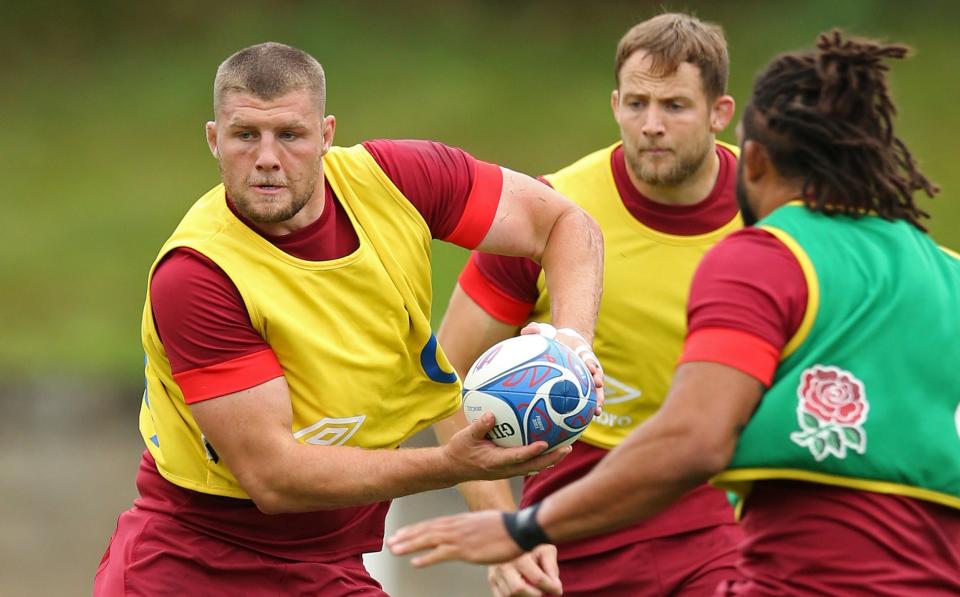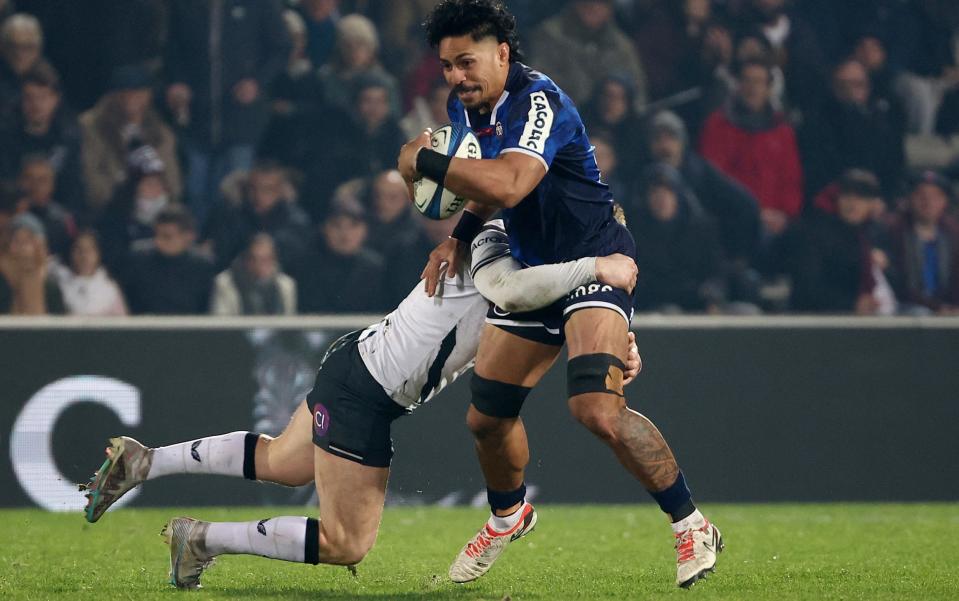Even the many who hate the Saracens, and will surrender to some schadenfreude at this point i wouldn’t imagine in their wildest dreams they would ship 50 points. Enduring resilience has been a pillar of the club’s success for more than a decade. Defeats such as those suffered by the Saracens in Bordeaux, at the hands of Matthieu Jalibert and friends, have been extremely rare.
Sunday evening’s 55-15 defeat was a record-breaking low point, which also marked a defining fourteen days for Mark McCall and his team. To stay in trophy hunting, the rot must stop immediately.
We can talk about regression to the mean and add some context to Saracens’ slump. Five of their seven defeats in the Premiership and Champions Cup have come at Sandy Park, Loftus Versveld, AJ Bell Stadium, Welford Road and now Stade Chaban-Dalmas. Winning in either of those places would have been impressive. But they also seem to be caught in a multi-faceted spiral.
Owen Farrell’s situation and the end of an era
The World Cup crossover, and any hangover, was always going to be tricky for Saracens given their need to juggle resources after contributing 13 internationals from five different countries to the tournament. A 65-10 loss to Exeter Chiefs on the opening day of this Premiership campaign reinforced this.
Subsequent distractions regarding their skipper, first when Owen Farrell announced his England break and then when news broke of a possible move to Racing 92, have made matters worse. They have also stressed that Saracens face a significant transition period, something McCall admitted ahead of their 19-10 loss to Leicester Tigers.
In addition to Farrell, two more stalwarts, Mako and Billy Vunipola, are likely to leave the club this summer. There will also be a significant contingent of first-team players leaving. In the past, Saracens have handled the inevitable churn well and maintained momentum despite the retirement of club legends such as Brad Barritt and Richard Wigglesworth. Still, this series of comings and goings will be a challenge.


For starters, it would take extraordinary concentration for players to be unaffected by it. Before the weekend, Farrell’s form was mixed. Against Tigers in the East Midlands, for example, he coughed up an interception that set up a try for Dan Kelly, but also led a slick attack, both from the first phase and with clever kick passes. Sunday was more difficult.
Farrell threw two errant passes early on – one bouncing off Maro Itoje’s head – before kicking the full ball. He was set back ten yards for questioning referee Chris Busby and later, in a charged second half, his charged chip set up an eighth Bordeaux try through Pablo Uberti.
At 32, Farrell still has a lot to offer and would certainly be refreshed by a change in scenery. He was in charge during last season’s Premier League final and for most of the World Cup semi-final against South Africa. But it’s understandable that he seems like his mind is messy right now. And because of his influence it harms the Saracens.
Without Farrell, Mako and Billy, Saracens would be a completely different place, requiring other leaders to stand up for themselves and a new fly half recruited. That said, with Ben Earl among those re-signing and Phil Brantingham and Rhys Carré expected to come in, they will have plenty of quality for the new era. Navigating a tricky interim will not be easy after other clubs such as Bath, Northampton Saints and Exeter have consolidated so clearly. Bath and Northampton have already won in North London this season.
Concentrated victim list
Injuries to key figures are difficult enough to deal with and Saracens are noticeably less reassured without Tom Willis and Alex Lozowski. Even in a short period since their arrival in August, the former came close to securing a place in a strong back row in the front line. Willis returns from knee surgery in March. Lozowski, a sharp and athletic midfielder, faces an extended layoff due to a torn anterior cruciate ligament. Callum Hunter-Hill, who has developed into a mobile and imposing lock, is ready to be fit again after the Six Nations.


By then, Saracens could face an uphill battle to reach the domestic play-offs. More damaging is probably the concentration of injuries in the front row. At loosehead prop, Eroni Mawi, Ralph Adams-Hale and Tom West have all faced time-out, while Mako Vunipola is also currently suspended. Kapeli Pifeleti and Tom Woolstencroft have been unable to provide backup at hooker. At tight end, Marco Riccioni and Ollie Hoskins, the latter signed primarily as injury cover for Alec Clarey, are unavailable. Saracens could previously rely on the scrum as a pressure reliever and were under the pump.
Bleeding scrum penalties and tries
When sides play well, the different facets of their game appear to be in sync. Saracens appear disconnected, their chain of performance broken most often by a steady stream of scrum penalties – most decisive at Sale and Leicester – and a porous defense. Curiously, they appeared as steely as ever at the Twickenham Stoop on November 18, when Harlequins were dismissed 38-10. But even in subsequent bonus-point home wins over Bristol Bears and Connacht, Saracens managed a total of 67 points; a clear sign that their offense has had to cover up other shortcomings. This is difficult to solve during a marathon game block.
In Bordeaux, Saracens conceded three quick tries and found themselves trailing 19-3 before the end of the first quarter. After missing a chance to pull back a try on the brink of half-time, when Logovi’i Mulipola was held up on the brink of a breakdown by the excellent Yoram Moefana, they had to open up and push the envelope to create a to chase a free lead. -perform return. That only caused more problems, because Bordeaux is king of the counter and loves transition opportunities. Official statistics state that Saracens completed 64 tackles and missed 33; a ridiculous ratio. Romain Buros and Louis Bielle-Biarrey were the main tormentors, beating thirteen defenders between them. Damian Penaud recorded no less than 142 meters with ball in hand. Bordeaux’s mix of speed and muscle, coordinated by a dancing Jalibert, was overwhelming.


Saracens cannot simply limp to the Six Nations break. They have a week to regroup and throw some counter punches of their own. Beat Lyon handily and they will keep alive the dream of a local Champions Cup final in Tottenham, which would be a fitting last dance for any potential departures. Exeter visits StoneX Stadium on January 27. Rob Baxter’s men will take the opportunity to add to the pain for Saracens.
They are sixth in the Premier League table and their title defense is faltering. They have overcome choppy spots before and gone on to win silverware. This time it would be a serious achievement for McCall.